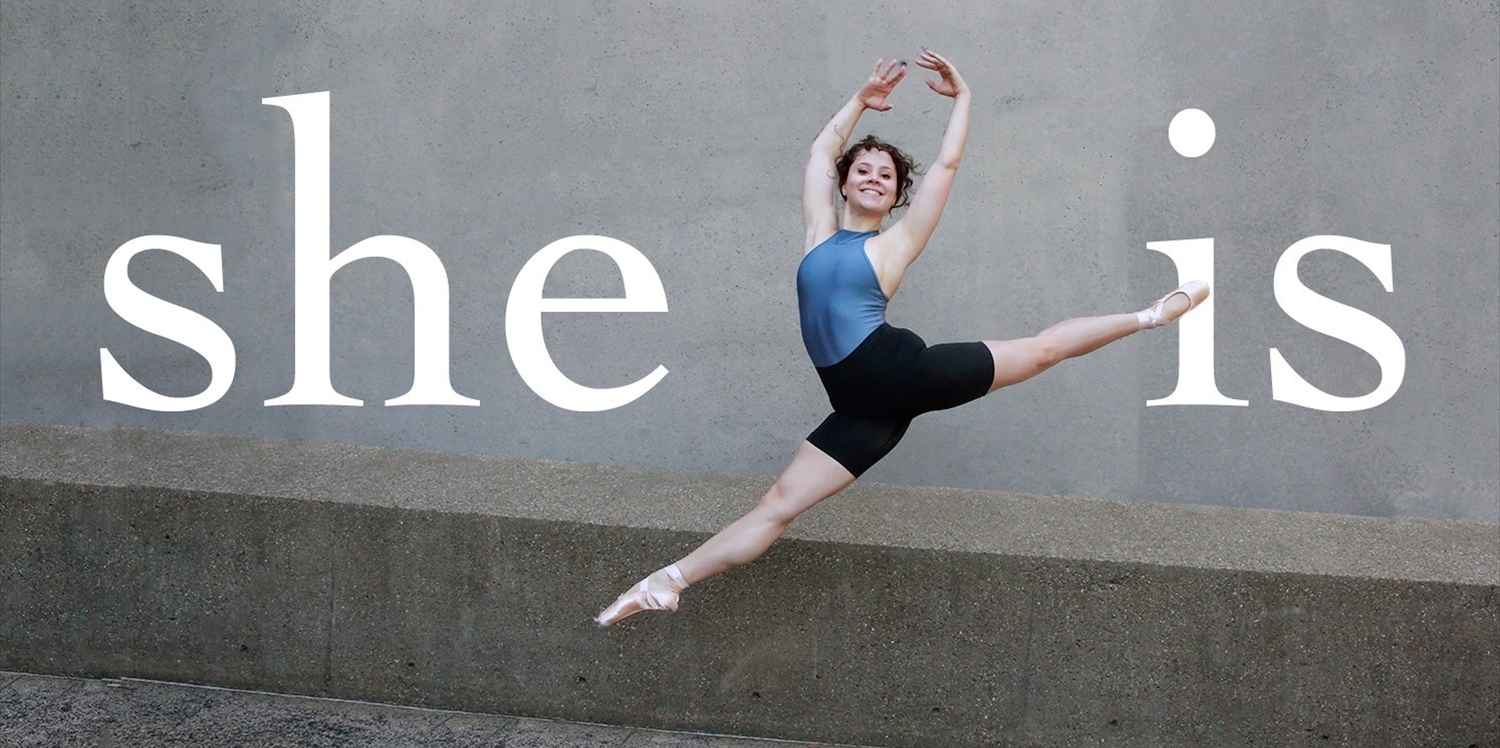
News
Cambridge Residents Slam Council Proposal to Delay Bike Lane Construction

News
‘Gender-Affirming Slay Fest’: Harvard College QSA Hosts Annual Queer Prom

News
‘Not Being Nerds’: Harvard Students Dance to Tinashe at Yardfest

News
Wrongful Death Trial Against CAMHS Employee Over 2015 Student Suicide To Begin Tuesday

News
Cornel West, Harvard Affiliates Call for University to Divest from ‘Israeli Apartheid’ at Rally
Harvard Ballet Company’s ‘she is’: A Show of Solidarity and Empowerment

“To Be, To Know, To Love.”
The Harvard Ballet Company chose these three themes as the centerpoints of their exploration of womxnhood, “she is.” According to the program, the production, directed by Margaret Canady and Isabel Wu, “explored ideas related to the development, challenges, and joys of womxnhood, all inspired by the dancers’ personal stories and experiences.” Each dance’s music and choreography was made by womxn. A short film comprised of three parts, directed by Austin Eder and produced by Sophie Barry, was screened at the beginning of each act, each part focusing on one of the three themes.
The film screened before the first act, “To Be,” focused on body consciousness as a womxn and interviewed cast members about the effect ballet had on their self-image, pushing them to pay attention to the length of their torsos, feet, height, and weight. Cast members danced in different outdoor settings around Cambridge. The cool-toned filter gave an appearance of intimacy, bringing the dancers’ every movement to the big screen as they opened up about their relationship with their bodies.
The first act was made up of five dances, each executed gracefully and powerfully by dancers dressed in burgundy. Most of the dancers wore everyday clothing, such as two-piece pant sets and shift dresses, blurring, and perhaps challenging, the usually rigid line between classical ballet and real life. Many also wore their hair half-up, a clear departure from the traditional slicked-back bun. This breaking of tradition was apparent from the very first dance, “Dawn,” a more classical piece characterized by captivating canons and pirouettes added to a certain sense of freedom. “Whatever sits at the center” and “misplaced and hiding” built on to this freedom, with dancers performing much more contemporary choreography, focusing on sharp isolations and other unconventional movements. Turned-in and purposefully flexed feet further contributed to this breaking away from classical ballet. Movements in canon dominated here, too, with “misplaced and hiding” giving the sense that each dancer was a mirror to another and hinting at the conformity forced upon womxn by society. In “Wildfire,” partner work and lifts featuring womxn both being lifted and lifting others seemed intentionally engineered to counter the stereotypical male-female lift model.
“To Know,” and the short film preceding it, seemed to focus on society’s problematic view of womxn as less-than and as people who shouldn’t stray too far from the guidelines. “It’s really popular to be feminist and an empowered woman [now]… but at the same time adhering to beauty standards,” said Canady. The short film also touched on the space taken up my men, a concept emphasized in the first dance of the act, “Strepsiptera.” Here, a single male soloist took up the entire stage, dancing alone in center stage as the other dancers remained frozen on the sidelines. He was eventually joined by the other dancers, and the whole dance maintained a sense of restlessness, a desperation to be seen and heard, intensifying into an anxious yet calculated chaos at the end. This act also featured pointe shoes for the first time in the show and costumes changed from burgundy to blue. “Home/body,” the fourth dance of the act, featured barefoot dancers anxiously grabbing and covering different parts of themselves, glaringly conscious of their bodies. As the dance progressed, this fretful energy dissipated as the dancers started to lean on each other, suggesting the healing power of solidarity and friendship amongst womxn. “Disclosure” ended the act with a desire to break free. With hands over their mouths, each of the three dancers took turns under a static spotlight while the other two stayed still. The dancer in the spotlight at any given time moved within it, but never strayed too far, seemingly trapped by its borders yet struggling to escape them, hinting at how womxn struggle to break free of societal expectations. The act, later followed by a 10-minute intermission, ended with all the dancers lining up on stage, covering their mouths over and over again.
The last act, “To Love,” shifted the costumes to gold, with dancers in glittery pants, shimmery skirts, and crop tops lighting up the stage. Here, they shone, taking up space and making their presence known. The first dance, “Caught,” started without music. Every movement was heard: the hard box of pointe shoes hitting the marley floor, the shifting of legs, the light thud of leaps landing. All the daintiness, the illusion of effortlessness that so dominated all the other dances, faded. The audience could feel every movement and the strength needed to execute them so gracefully. The dancers were anything but delicate.
The show’s closing number, “to claim as her own,” acted as a reprise. Dancers in all costume colors appeared on a stage blinded by white light. The music stopped and restarted frequently, yet the dancers never stopped moving. Seemingly effortless yet powerful all at once, the choreography oscillated between graceful and sharp movement. Elements of every dance were reincorporated, providing a sense of fulfillment only brought to completion when all the performing company dancers walked out to bathe the stage in red, blue, and gold, creating a beautiful ripple from one corner of the stage to the other.
To end the show, all the dancers joined in a group at center stage, smiling and leaning on each other. Vibrant and intimate, the production brought the challenges and joys of womxnhood to life, translating individual ideas to the universal experience of being a womxn.
Want to keep up with breaking news? Subscribe to our email newsletter.
